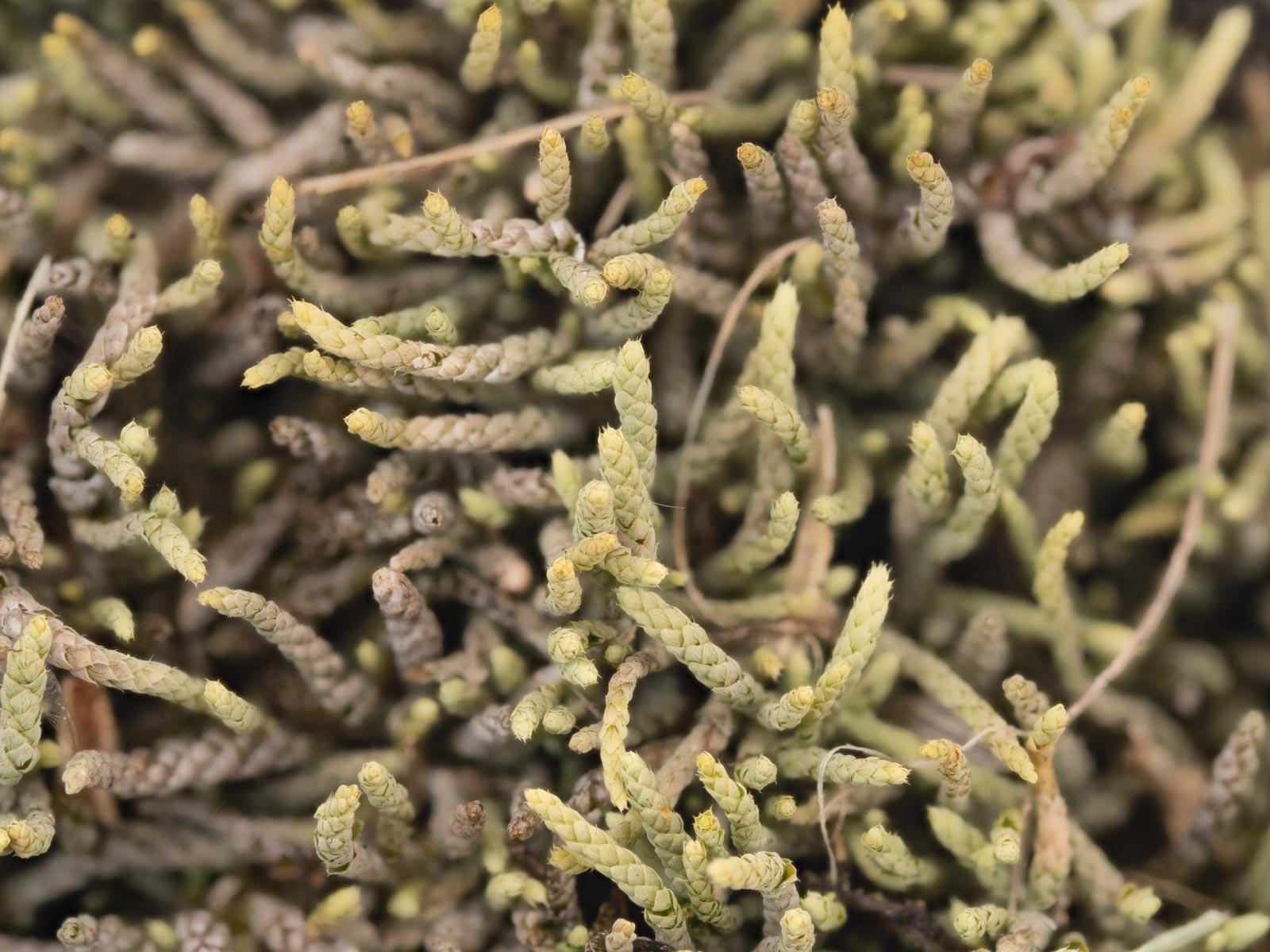
Consortium of Bryophyte Herbaria
- building a Consortium of Bryophytes and Lichens as keystones of cryptobiotic communities -
|
Family: Theliaceae |
Plants: small to medium-sized. Stems: 1-pinnate or irregularly branched, branches erect-ascending, simple or irregularly branched; epidermal cells elongate; rhizoids reddish brown, densely branched, smooth. Leaves: deltoid-ovate; base decurrent; apex broadly acute to obtuse, abruptly contracted, acumen long, apiculate or piliferous; costa single or sometimes double, 1/2–3/4 leaf length, sometimes spurred or 2-fid; alar cells quadrate or subrectangular; laminal cells rhombic to fusiform, stoutly 1-papillose abaxially, papillae columnar, simple or 3–6-branched. Seta: yellowish when young, red when mature, flexuose when dry, smooth. Capsule: cylindric to ovoid-cylindric, symmetric to somewhat curved, smooth to weakly wrinkled when dry; exothecial cells at mouth oblate to quadrate, proximal cells quadrate to short-rectangular, enlarged, red, walls thin to thick; stomata on neck; annulus rudimentary, persistent, 2- or 3-seriate, cell walls thin; operculum conic-subulate; exostome teeth united at base on short, smooth membrane, white, linear, external surface smooth basally, finely papillose distally, trabeculae and median line thickened, internal surface lightly papillose, trabeculae weak; endostome rudimentary, white, lightly papillose, basal membrane low or high, segments reduced to stubs or to 1/2 exostome length, cilia 1 or 2, nublike or absent. Spores: smooth to lightly papillose. North America, ne Mexico, West Indies (Dominican Republic). Species 3 (3 in the flora). Thelia is remarkable in its glaucous, bluish green color, thick, densely tomentose mats, and tumid to julaceous stems and branches. The stem leaves are distinctively deltoid-ovate with rhombic cells, simple or 3–6-branched columnar papillae, and frequently long-ciliate margins. The sporophyte has a long seta and typically erect, symmetric, cylindric to ovoid-cylindric capsules. The diplolepidous peristome is yellowish white. The endostome segments and cilia are often reduced to nublike projections on a low or high basal membrane. In the field, Thelia could be confused with Myurella (Pterigynandraceae) because both genera have terete-foliate stems and branches that occur in mats or cushions, radiculose stems, and a similar color. Myurella rarely occurs in dense mats, and its leaves have short, double costae, serrate or sinuate-dentate margins, and lower, unbranched papillae. |
Powered by Symbiota.





